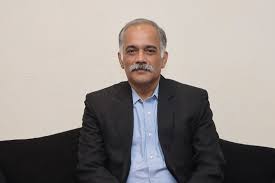Biggest problem for insurance industry is fraud: GIC Re chief

Fraud is no longer just a side issue for the Indian insurance industry—it has become a major structural threat. According to GIC Re Chairman Ramaswamy Narayanan, fraudulent claims and manipulations are now the biggest problem facing insurers across segments like health, motor, and agriculture. At a recent industry conference, Narayanan emphasized that despite strong growth potential in India’s insurance market, fraud continues to erode trust, inflate costs, and stifle innovation.
The Many Faces of Insurance Fraud in India
Insurance fraud in India is not limited to one sector. It has penetrated deeply into multiple lines of coverage:
Health Insurance Abuse
Perhaps the most visibly impacted area is health insurance. Narayanan pointed out that many hospitals overcharge when patients are covered under insurance. From ordering unnecessary diagnostic tests to inflating treatment bills, healthcare providers often exploit insurance coverage, leading to artificially high claim ratios.
This malpractice directly affects consumers in the form of higher premiums, even though the quality of treatment remains unchanged. As Narayanan put it, “The consumer ends up paying more for the same services—sometimes even worse services—just because the system is being manipulated.”
Motor Insurance Scams
Fraud in motor insurance takes several forms, including staged accidents, fake theft claims, and inflated repair bills. In some cases, entire networks—including garages, surveyors, and towing services—collaborate to submit exaggerated or entirely fake claims.
Such scams put a strain on insurers, increase the overall cost of motor coverage, and damage the credibility of genuine policyholders who may face more scrutiny during their claims process.
Crop Insurance Loopholes
India’s crop insurance schemes, especially under government-backed initiatives like the Pradhan Mantri Fasal Bima Yojana, are also vulnerable. Fraudulent claims can arise from misreporting of crop loss, duplication of policies, and even manipulation of satellite or survey data. This not only leads to wastage of taxpayer money but also deprives legitimate farmers of timely compensation.
Why Fraud is the Industry’s Biggest Challenge
Ramaswamy Narayanan stressed that the problem of fraud affects the entire insurance ecosystem—from consumers to providers to regulators. The consequences are widespread:
- Premium Inflation: Insurers pass on the cost of fraudulent claims to all policyholders, resulting in more expensive premiums.
- Loss of Trust: When legitimate claims are delayed or rejected due to suspicion, consumers begin to lose faith in the system.
- Operational Drag: Fraud investigations and disputes lead to longer claim settlement times and operational inefficiencies.
Most importantly, fraud hampers the growth of insurance in India’s underserved markets, including rural areas and small towns, where trust in financial institutions is already limited.
Industry and Regulatory Response
India’s insurance regulator, the Insurance Regulatory and Development Authority of India (IRDAI), along with the General Insurance Council (GI Council), has taken several steps to counter fraud:
1. Bima Sugam Platform
A centralized digital platform called Bima Sugam is being developed to track claims across insurers. This data-sharing mechanism will make it harder for policyholders or intermediaries to file duplicate or inconsistent claims.
2. Regulation of Healthcare Pricing
To combat rising health insurance claims, the GI Council has asked the government to introduce price regulation for hospitals, ensuring that insured patients are not charged more than their uninsured counterparts.
3. AI and Machine Learning in Claim Vetting
Leading insurers, including GIC Re, are using AI tools to identify patterns in claims data and flag anomalies. These tools can detect cases where the same doctor, hospital, or patient repeatedly files suspicious claims.
4. Anti-Fraud Training and Vetting
Insurers are investing in fraud detection training, blacklisting unethical hospitals, and partnering with law enforcement to take strict action against proven fraud cases.
GIC Re’s Anti-Fraud Strategy
As a reinsurer, GIC Re plays a vital role in the backend of insurance operations. Narayanan shared that GIC Re has implemented a multi-tiered anti-fraud framework, which includes:
- Classification of frauds (internal, agent-related, claim-related)
- Whistleblower mechanisms
- Regular audits and third-party investigations
- Collaboration with forensic experts and legal consultants
GIC Re has also begun tracking fraudulent claims across years and regions, helping to build a fraud profile that can be shared with primary insurers.
A Long Road Ahead
Despite efforts, fraud continues to evolve. With new technologies and growing policyholder numbers, fraudsters are getting more creative. Narayanan emphasized the need for a combined industry-wide response involving insurers, regulators, hospitals, law enforcement, and consumers.
He also proposed that fraudulent insurance activity should impact the credit history of individuals or institutions, in the same way that loan defaults affect CIBIL scores. This would act as a long-term deterrent and help improve accountability in the system.
Conclusion: A Call to Action
Fraud may be the biggest problem in the insurance sector, but it’s not an insurmountable one. With digital transparency, regulatory reform, and strong internal controls, the industry can protect itself and its customers from the damaging impact of unethical practices.
As the Indian insurance market expands to cover millions of new customers, tackling fraud is no longer optional—it is essential for sustainable, inclusive growth.






